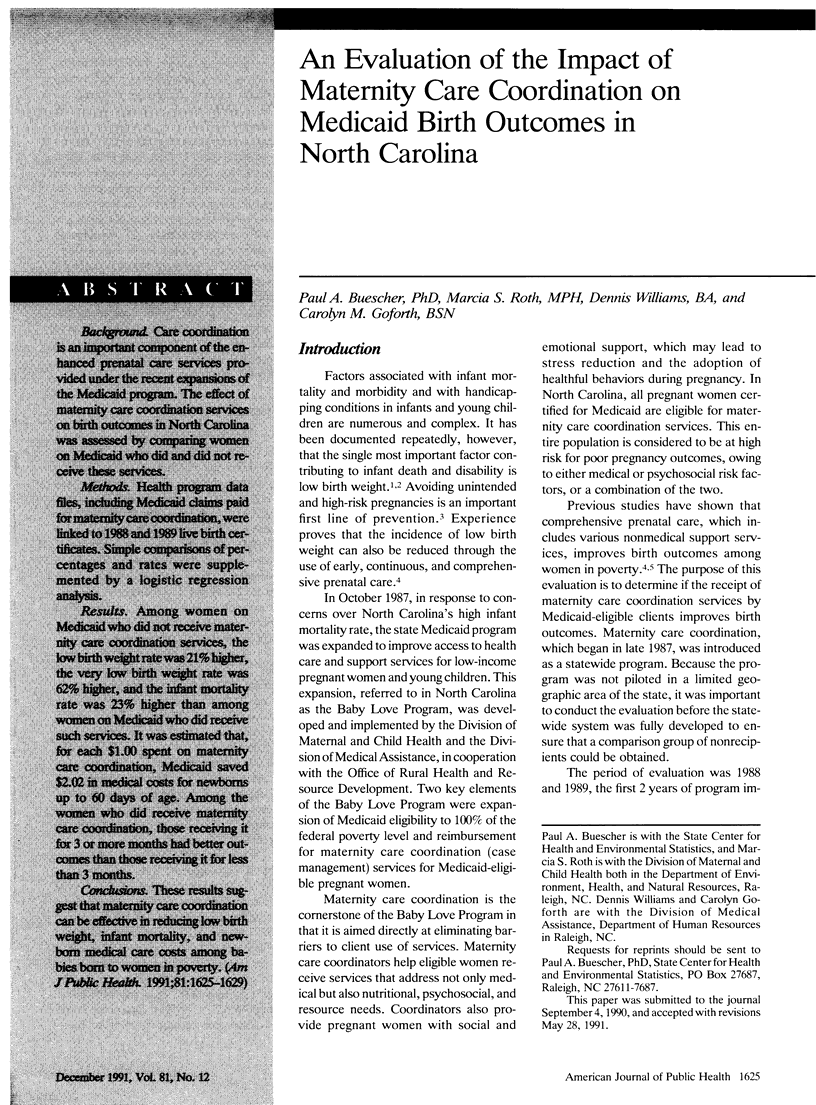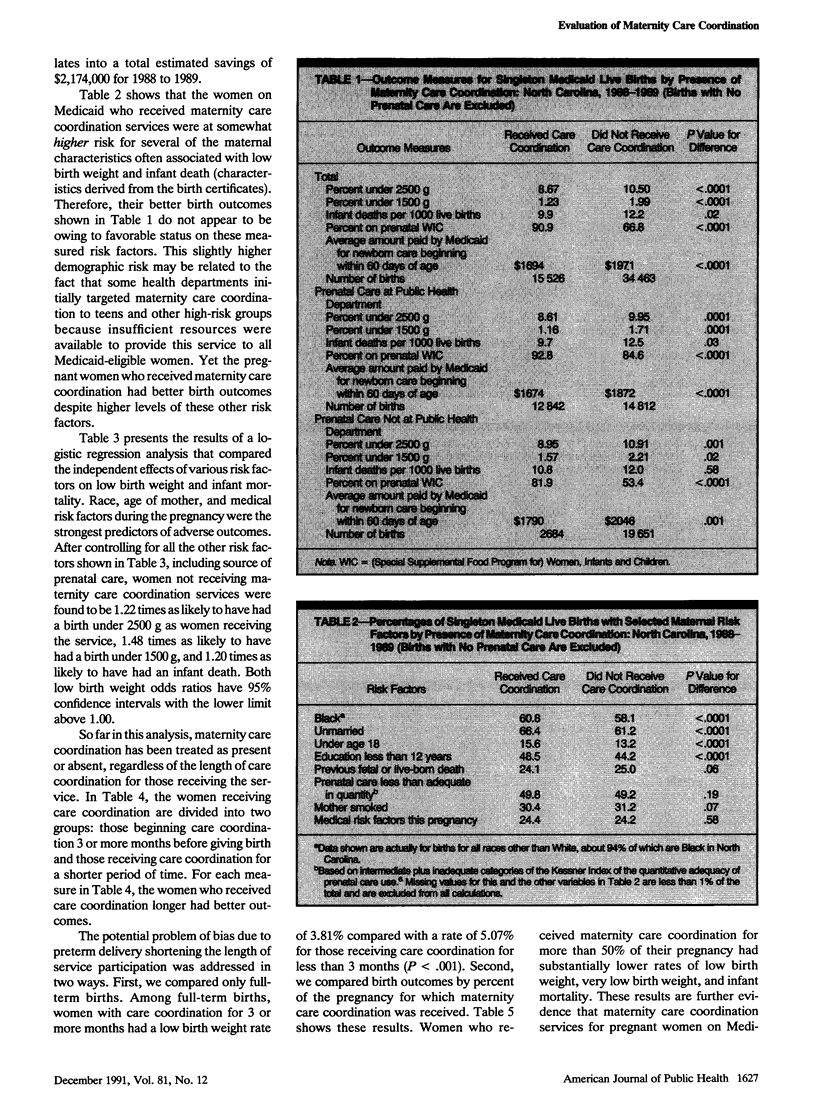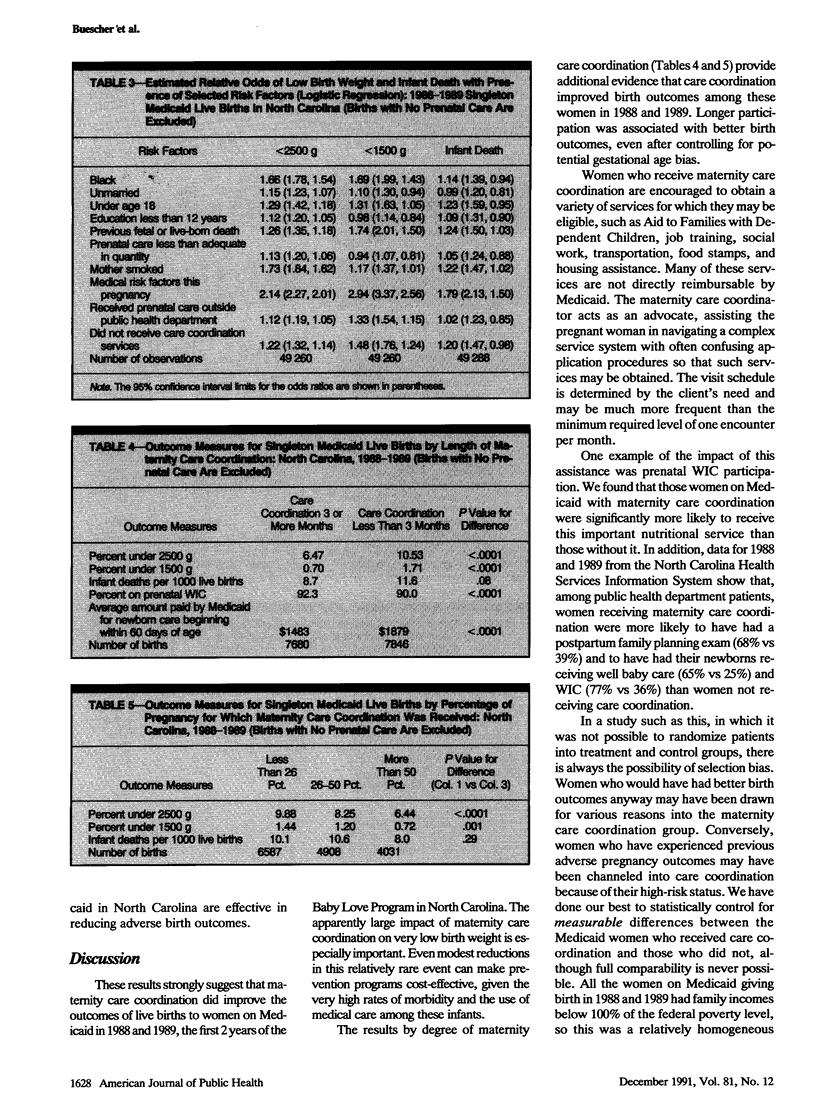Abstract
BACKGROUND. Care coordination is an important component of the enhanced prenatal care services provided under the recent expansions of the Medicaid program. The effect of maternity care coordination services on birth outcomes in North Carolina was assessed by comparing women on Medicaid who did and did not receive these services. METHODS. Health program data files, including Medicaid claims paid for maternity care coordination, were linked to 1988 and 1989 live birth certificates. Simple comparisons of percentages and rates were supplemented by a logistic regression analysis. RESULTS. Among women on Medicaid who did not receive maternity care coordination services, the low birth weight rate was 21% higher, the very low birth weight rate was 62% higher, and the infant mortality rate was 23% higher than among women on Medicaid who did receive such services. It was estimated that, for each $1.00 spent on maternity care coordination, Medicaid saved $2.02 in medical costs for newborns up to 60 days of age. Among the women who did receive maternity care coordination, those receiving it for 3 or more months had better outcomes than those receiving it for less than 3 months. CONCLUSIONS: These results suggest that maternity care coordination can be effective in reducing low birth weight, infant mortality, and newborn medical care costs among babies born to women in poverty.
Full text
PDF




Selected References
These references are in PubMed. This may not be the complete list of references from this article.
- Buescher P. A. Healthier mothers and children through women's preventive health services. N C Med J. 1990 Jun;51(6):262–264. [PubMed] [Google Scholar]
- Buescher P. A., Smith C., Holliday J. L., Levine R. H. Source of prenatal care and infant birth weight: the case of a North Carolina county. Am J Obstet Gynecol. 1987 Jan;156(1):204–210. doi: 10.1016/0002-9378(87)90239-0. [DOI] [PubMed] [Google Scholar]
- Guyer B. Medicaid and prenatal care. Necessary but not sufficient. JAMA. 1990 Nov 7;264(17):2264–2265. [PubMed] [Google Scholar]
- Lee K. S., Paneth N., Gartner L. M., Pearlman M. The very low-birth-weight rate: Principal predictor of neonatal mortality in industrialized populations. J Pediatr. 1980 Nov;97(5):759–764. doi: 10.1016/s0022-3476(80)80259-9. [DOI] [PubMed] [Google Scholar]
- McCormick M. C. The contribution of low birth weight to infant mortality and childhood morbidity. N Engl J Med. 1985 Jan 10;312(2):82–90. doi: 10.1056/NEJM198501103120204. [DOI] [PubMed] [Google Scholar]


